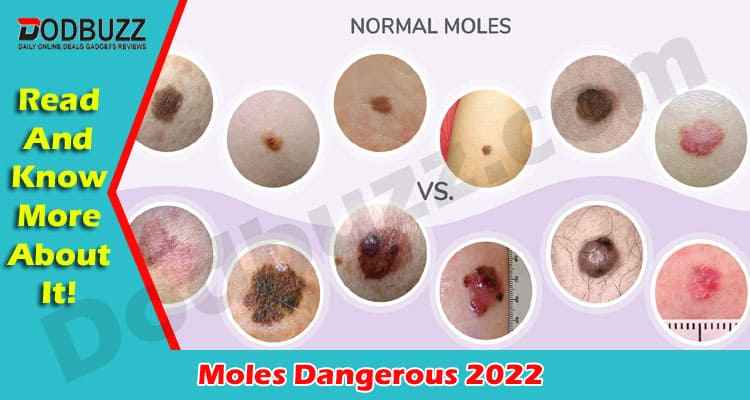Are Moles Dangerous: Most of us have moles somewhere on our bodies. Some of us get excited when we find a new one, while others are nervous because they don’t know much about moles.
Common questions asked would be, are moles cancerous? Should I get a mole removed? Or should I leave it alone? The answer to these questions lies in the type of mole that you have.
What is a Mole?
A mole is basically just a clump of cells that looks different from our other skin cells because it has a large amount of pigment known as melanin. Moles are usually brown or black, but can also be pinkish, tan, red, or flesh-colored. They are usually irregular in shape and size and can grow hair, often becoming more prominent with age as we get older and lose the natural elasticity our skin has.
What to look for in a mole
It’s important to look for new moles, as well as changes to existing moles. If you have a family history of melanoma or other types of skin cancer, talk with your dermatologist about being screened yearly. If you are concerned about any mole on yourself or your loved one, talk with your doctor.
There are three types of moles that are typically found on our bodies, which are common, benign, and malignant.
Common Moles
As the name suggests, these types of moles are very common and do not pose any risk to your health. Common moles will typically have an even color throughout the mole. These usually appear during childhood or early adulthood, and begin to slowly fade away with age.
Benign Moles
These types of moles are called benign, which simply means they are not cancerous or at a higher risk of becoming cancerous. Benign moles do not have an even color throughout the mole, but instead come in different shapes and colors. Sometimes these moles may fade away as we age, but other times they may not. It is important to visit your dermatologist if you have any concerns about these types of moles as it could be a warning sign of skin cancer.
Malignant Moles
A malignant mole is often referred to as melanoma and can become life-threatening if it spreads to other parts of the body. These moles are typically very dark and can appear smooth, irregular, or have a diameter larger than 6mm, if you notice any changes to your mole, it is important to see a dermatologist right away.
How to tell if a mole is cancerous
If you are concerned about a mole on your body, it is important to take note of the following:
- If a mole has an irregular border or if the color in a part of the mole changes.
- If there is bleeding coming from the mole.
- If the mole becomes crusty or scaly.
- If it becomes raised or enlarged.
- If there are changes to its shape or size, especially if it becomes wider than 6mm.
Moles on the Body
It is important to note that moles on some parts of your body, like your back, can be more dangerous than those found in other areas. Moles usually found on the head, legs, arms, or back can be more dangerous because these areas are typically exposed to the sun. This causes the cells in this area of our body to become damaged and is at a higher risk of cancerous moles.
The importance of early detection
One of the most important things we can do to protect ourselves is early detection. This means checking your moles and seeing a doctor if you notice any changes. This will allow doctors to monitor your mole and provide treatment options as needed.
It should be noted that having a mole does not mean it is dangerous, however, it is important to keep an eye on it in case it changes. Treatment options are available for early detection of cancerous moles, so visit your dermatologist regularly to maintain healthy skin.
If you have any concerns about a mole on yourself or a loved one, talk with your dermatologist. Early detection is key to protecting yourself from dangerous types of moles. It is also important to note that when in doubt, always talk with a doctor.
Treatment options for melanoma
Treatments can include surgery, radiation therapy, and chemotherapy.
Final thoughts
Moles are very common and typically benign, but sometimes they may develop into melanoma or become life-threatening. It is important to know the signs and symptoms of this type of cancer, so it may be diagnosed in time for treatment options. If you have any concerns about a mole or if you notice changes to your skin, talk with your dermatologist immediately!







